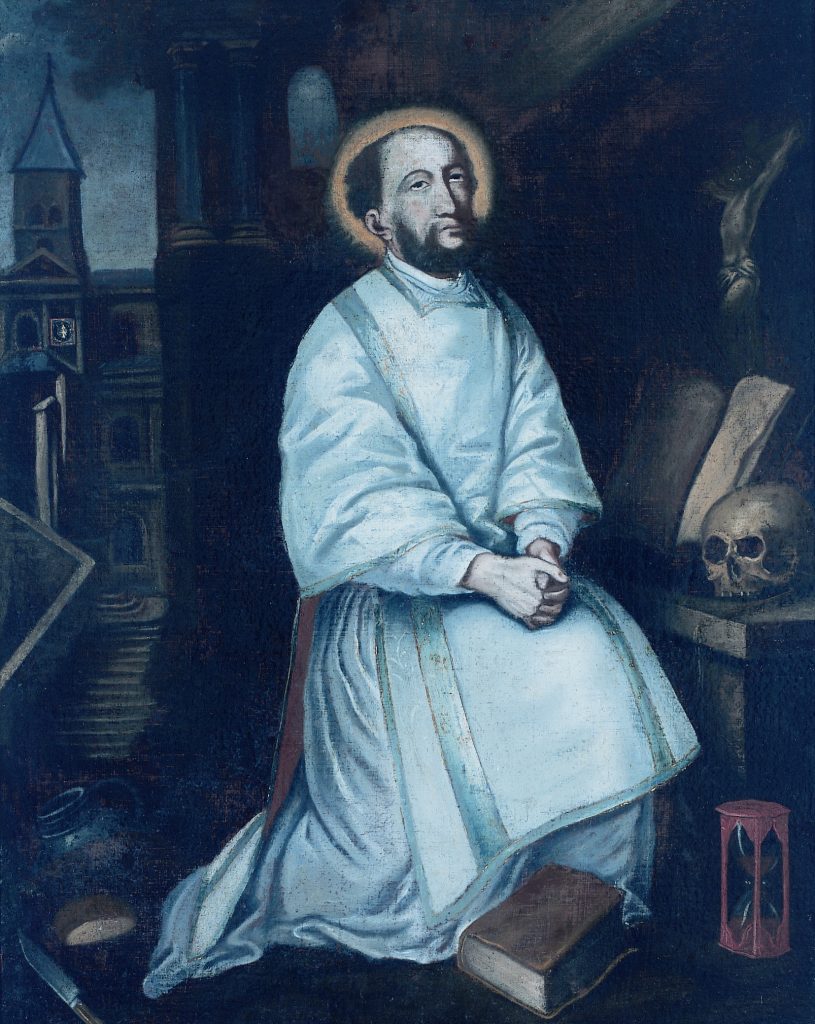The history of the museum
Saint Simeon gave the building his name
The Romanesque Simeonstift is situated directly adjacent to the Roman Porta Nigra, together they represent an architectural complex which is unique in Germany. The Porta Nigra, built by the Romans in 2nd century AD as the northern gate in the city’s fortifications, is constructed of large sandstone blocks and denoted the northern border of the city of Trier until long after the Roman era.
It would probably have been destroyed like the other city gates, had it not been for Simeon of Syracus who came to Trier in 1030 AD. Pilgrimage leader and consultant of Poppo von Babenberg who was Archbishop of Trier at that time, Simeon let himself be locked in the East tower of the Porta Nigra to live there as a hermit. After his death in 1035 he was buried in the Porta Nigra and was sainted by the Pope a short time later. Poppo had the forecourt and gateways of the Porta Nigra built over with ramps and steps and reconstructed the two upper storeys of the Porta Nigra into a double church, which he consecrated to Saint Simeon. At the same time, Poppo founded a monastery next to the church and built a quadrangle courtyard surrounded by two-storey cloisters (along the lines of the two-storey church). The Simeonstift developed into a place of science and of shelter for the poor.
In 1802 in the course of secularisation, the monastery was dissolved and sold to private individuals. It was only in 1917 that the city of Trier purchased the property, which had fallen into disrepair by that time. The West wing had to be rebuilt and the whole building was restored under the guidance of architect Friedrich Kutzbach. From 2004 – 2007 the whole complex was renovated and extended with a new annex to the North wing by architects Baumewerd from Munster/Cologne.
History of the collection
The Museum was founded in 1904 and initially comprised an exhibition of traditional dress and furniture in the rooms of the “Rotes Haus” and the Steipe building on the market square. The basis of the Museum’s collection today stems from the valuable donations made by Trier citizens of the 19th century: Johann Peter Job Hermes, Carl Schoemann, Wilhelm Rautenstrauch, Franz Xaver Kraus and Franz von Pelser-Berensberg, who bequeathed paintings, sculptures, hand-crafted objects and textiles on to the Museum. After World War One the Museum was renamed the “Moselmuseum” in order to draw attention to its’ multi-regional aspects. The focal point of the collection was Trier art from 1800 onwards, but an important collection of Egyptian and East Asian artefacts were also exhibited. World War Two thwarted the National Socialists’ plan to bring all Trier collections together in a single “Großmuseum der deutschen Westmark” in the Prince Elector’s palace. After the war, the exhibits which had been saved were sent – at first only temporarily – to the Simeonstift, where the Museum was able to resume its’ activity and, eventually, find a permanent home.
After having been endowed with the collections of Irmgard and Cuno Stapel, Carl Adolph Mummenthey’s collection of antique oil lamps, as well as the estates of Trier painters Hans Adamy, August Trümper and Fritz Quant, in 1987 the Museum inherited the collection of Dr. Martin Schunck, which included important paintings and sculptures from the 15th to 20th centuries. In terms of numbers, by far the largest part of the inheritance was the 1250-strong collection of East Asian miniatures, mostly from the 17th and 18th centuries, the largest collection of its kind in Germany. After a three-year period of extension and renovation work, the Museum was reopened in 2007 with a brand new, permanent exhibition on local history and two generously proportioned rooms for temporary exhibitions.

St. Simeon in front of the Porta Nigra
1746/50
Oil on canvas
74,5 x 58 cm
Stadtmuseum Simeonstift Trier
Inv.-Nr. III 1182